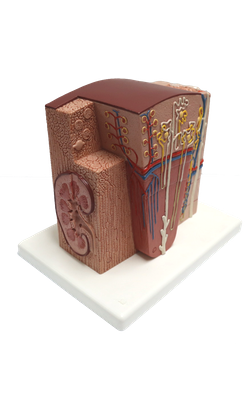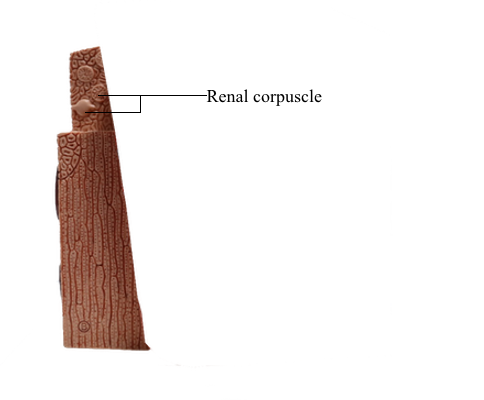Main Model

Zone B : Renal corpuscle

Each kidney is a large compound tubular gland and contains numerous nephrons. The nephron, which is responsible for filtration, excretion, and resorption, is the basic structural and functional unit of the kidney; it consists of a renal corpuscle and a long, convoluted renal tubule, which is divided into a proximal convoluted tubule, loop of Henle, and a distal convoluted tubule that joins to the collecting tubule.
The substance of the kidney is made up of an outer cortex and an inner medulla. A portion of each nephron may be located in both cortex and medulla, but the renal corpuscles are only present in the cortex. The cortex can be divided into an outer zone and inner zone based on the distribution of the corpuscles.
The renal corpuscle, also known as a Malpighian corpuscle, is the essential portion of the nephron. It consists of a renal glomerulus and Bowman's capsule. The corpuscle has two poles: the vascular pole and urinary pole. At the vascular pole, the afferent arteriole (which supplies the capillary network of the glomerulus) enters, and the efferent arteriole (which collects the blood from the capillaries) leaves the corpuscle. The urinary pole is the beginning of the proximal convoluted tubule; it is continuous with Bowman's space.